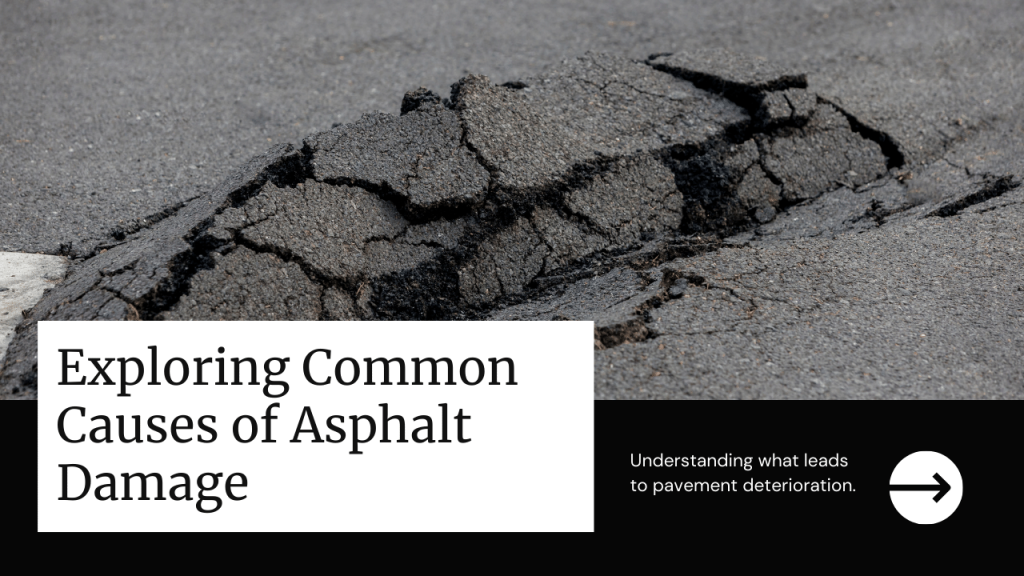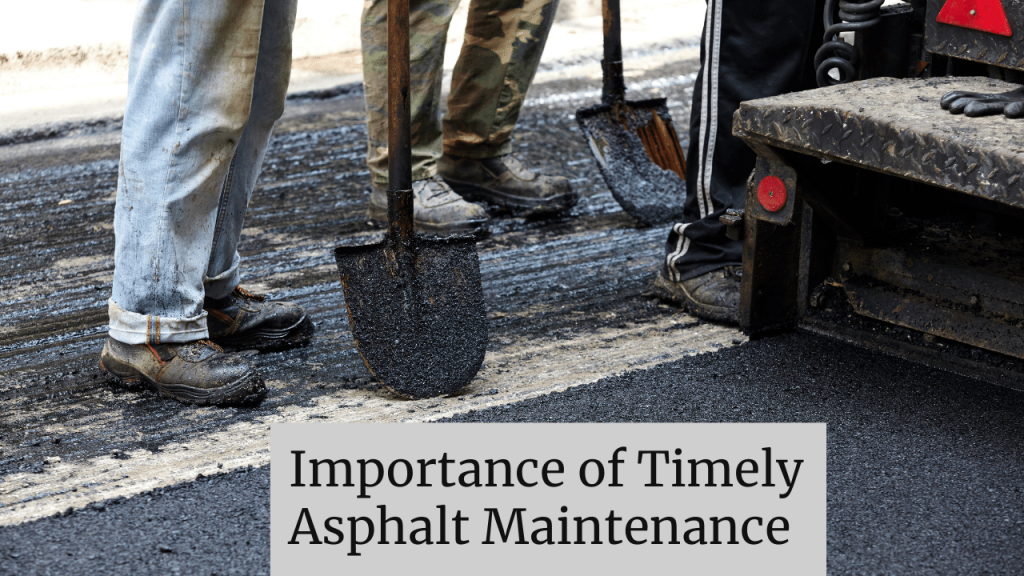Asphalt is one of the most commonly used construction materials for driveways, parking lots, and roads. Asphalt might likely to experience some forms of damage that need to be repaired to ensure it meets the durability span that is expected of it. Asphalt surfaces are susceptible to several types of damage, and ways of dealing with them are also highlighted in this article.
Common Causes of Asphalt Damage
Several factors can lead to asphalt damage, including:
– Ultraviolet radiation, effects of heat, cold, humidity, rainfall, and snow melt.
– Vehicular traffic and weight loading the surface. For example, in a road network, the number of cars and trucks, together with the weight of materials transported on the road surface has a direct influence on the amount of “heat island effect” observed.
– This means that the asphalt weakens due to sub grade failure or movement underneath the asphalt.
– Hazards are present in poor drainage, stagnant water, and cracked paths.
– Oil leaks melting the asphalt. Petroleum products can dissolve the asphalt, and it has become a concern due to frequent leakage.
– When the asphalt mix design or even the laying of the asphalt layer is done inappropriately
It is essential to have knowledge of some causes of damage to avoid or tackle them appropriately by choosing the right asphalt mix, introducing adequate drainage systems, regulating traffic, and implementing timely repairs.

Major Asphalt Pavement Distresses
Four significant kinds of distress can affect asphalt pavements:
Cracking
These gaps further result in water infiltration, affecting the base and subgrade even more. Common asphalt cracks include:
– Cracks that are perpendicular to the direction of pavement, or those that are horizontal, are classified as transverse cracks.
– Longitudinal cracks: running in the direction of the pavement. Longitudinal cracks are the most common type of distress, and they appear mainly parallel to the direction of the pavement.
– Alligator or map cracking –interconnection of crack patterns – evenly spaced, grid-like
– Technically, reflective cracks can be defined as cracks that extend from underlying substrates
– Slippage cracks – these are crescent-like cracks originating close to the joints
Potholes
Potholes are cup-shaped depressions on the surface of a paved road, which develop due to the impact and loading on the sub-base. They allow quick wear of pavement from water seepage and traffic pressures.
Rutting
This is a low surface profile in wheel paths that has resulted from the plastic deformation of the asphalt. It creates gradual depressions that result in water pooling and penetrating the pavement’s base.
Raveling
Raveling is the loss and disintegration of the pavement surface material due to traffic wear and tear and the deterioration of the asphalt binder. It gradually degrades the surfacing and leads to more damage from water.
Asphalt Repair Methods
Several methods can repair common asphalt damages:
Crack Sealing
Cracks are sealed with a unique rubber material that prevents water from penetrating the pavement and linking it at specific points. Deflection greater than L/360 or cracks wider than ¼ inch may require the addition of an expansion joint.
Pothole Patching
Potholes are scaled to be square-shaped, cleaned, and then filled with the compacted asphalt mixture. Large potholes may require special treatment or complete depth repair or resurfacing that involves replacement of base material.
Surface Treatments
Asphalt overlays are placed over deteriorated surfaces as pavements become rutted, raveling, or have extensive cracking. There are various treatments, such as overlays, mill & fills, resurfacing, etc.
Section Replacement
Heavily distressed areas have been found to have long strips of the asphalt surface that have been excavated and replaced with new hot mix asphalt and compacted base courses.
Drainage Improvements
Other measures include sealing joints, placing drains or pipes, re-grading surfaces, or increasing slope to eliminate standing water and weathering pavements.
To ensure correct asphalt repairs, one must first assess the distress types, the severity, and the causes of the distress. It can then be more accessible to choose the proper method to correct the damage issues that may be present before the situation gets worse.
Importance of Timely Asphalt Maintenance
It is essential to conduct routine control of asphalt’s condition and carry out minor repair work if there are some defects on the surface of the paving. This is why problems like the appearance of cracks and ruts are affordable at this stage, compared to the rehabilitation or reconstruction costs.
If timely maintenance is carried out, an asphalt surface can easily survive the intended useful life of 20-30 years. If these damages are not addressed as soon as possible, early reconstruction may be required after 5 to 10 years of installation, and this could be very costly.

Maintenance of the asphalt surface also ensures that it is safe and easy to drive on and accessible from such things as loose particles, such as rocks, soil, slippery spots, potholes, puddles of water, and rough edges of cracked asphalt.
Asphalt Repair Planning
Considering that asphalt repair may involve the use of a lot of equipment and materials, it is critical to decide by cost comparison whether rectifying distresses or entire replacement is best. Indeed, crack sealing is one of the most effective repairs that give a high return on investment and should be given top priority.
Site usage, traffic loads, safety concerns, and future intentions should also be considered when developing repair plans. These areas may still need rehabilitation or reconstruction at some future date, depending on when funding or resources become available.
Consequently, knowledge of the mechanisms of asphalt distress, PM chances, and methodology of repair assists the asset owners in sustaining the long-run value of their pavements through informed, timely, and cost-effective solutions.

